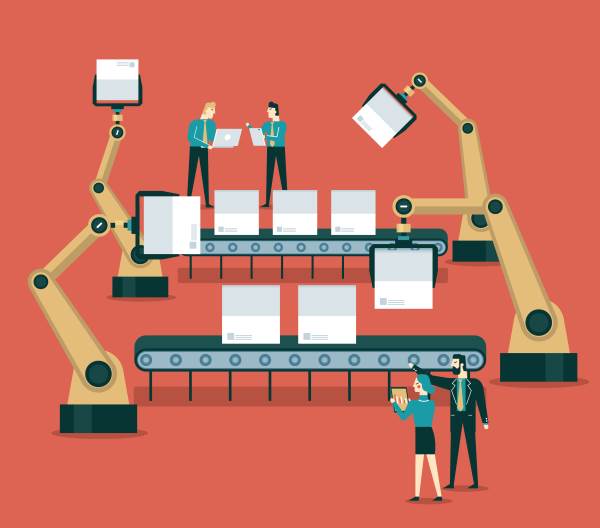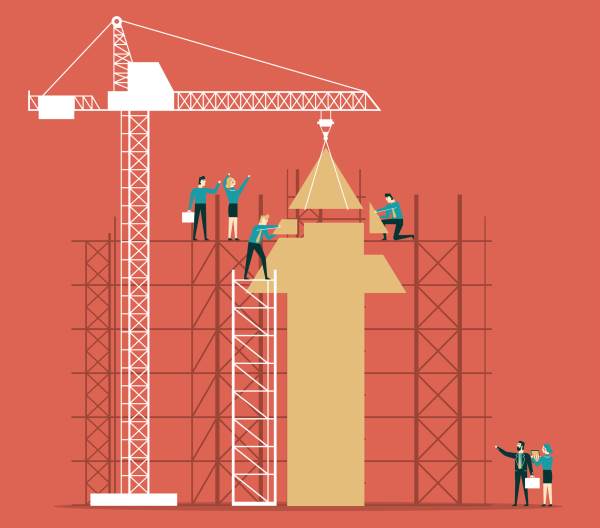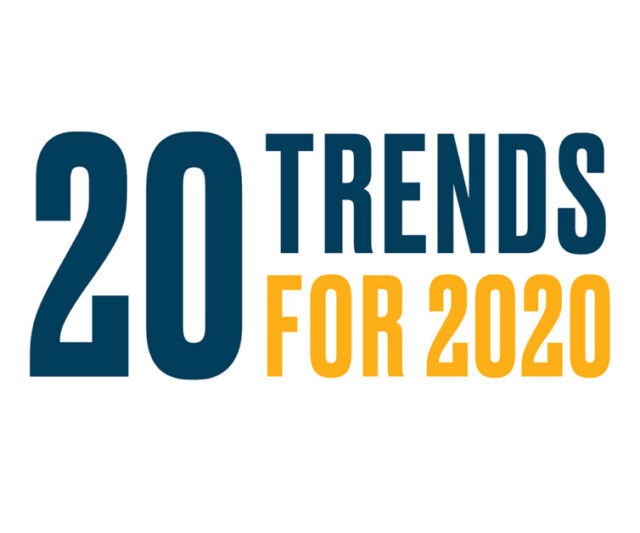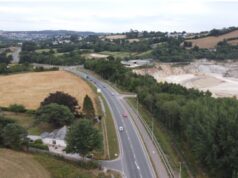From on-demand learning to changing urban landscapes, these are the 20 trends set to define public works engineering over the coming years.
While the coronavirus pandemic has thrown everything up in the air this year, there’s still a host of emerging trends in the engineering and construction industries that are likely to become more prominent as we move forward.
We asked a handful of industry mavens to identify the engineering trends that are emerging in the public works sector for education, leadership, disruption, asset management and waste.
Education

- Learning On Demand

The Director of Charles Sturt University’s Engineering Department, Professor Euan Lindsay, predicts higher education will “become more like Netflix”, with asynchronous on-demand learning. He says: “Everyone will be able to watch, pause and rewind at their own pace. Historically, higher education couldn’t scale up because lecture theatres needed to be shared in a system driven by timetables. That model is being broken down now that education can be delivered flexibly.”
- Cut-up Qualifications

The way engineers earn qualifications is also likely to change, believes Professor Lindsay. “Engineers will earn technical CPD points instead of studying for additional degrees. The attraction is in the asynchronous volume and delivery, because learning in this style is cut into smaller pieces and completed on demand.” The biggest issue, he says, is how to aggregate the finer credentials “into a larger, ‘macro’ style qualification”.
- Automation for Assessments

Academics could be freed up from poring over assessments thanks to developments in automation. “I predict that in 10 to 15 years’ time, even long-form essays will be able to be ingested, understood and marked using automated marking,” says Professor Lindsay. “Driving this trend are the potential benefits of redirecting a considerable amount of academics’ time away from marking papers to more valuable work, and being able to send assessment results to students instantly.”
- Wider Workplace Learning

“In engineering, the crisp boundary between education and industry is breaking down,” says Professor Lindsay – and that means a trend for increased learning on the job. “Education will blur into the engineering practice and profession, and the practice and profession will – and should – blur into education. Already, engineers-in-residence are entering academia, while academics are taking industry sabbaticals.”
Leadership

- Rotate to Innovate

In the field of public works leadership, Ossie Martinz, Director of Infrastructure at City of Monash in Victoria, sees a trend emerging for rotation programs. “Engineers thrive on new challenges and ongoing learning,” he says. “Leaders should seek opportunities for rotation programs that specify outcomes but leave fluid the pathways to getting results. Rotation programs provide an inspiring base for graduates’ workplace training and that makes them better engineers in the long term.”
- Collaboration is Key

Bringing together companies, councils and other bodies to work together on large-scale projects will be vital in the coming years, insists Martinz. “The benefits from aggregated services include cost-savings and increased knowledge,” he says. “Councils in Melbourne are demonstrating the advantages of collaboration in the sustainability space by forming Greenhouse Alliances. Their Renewable Power Purchasing Agreements (PPA) use combined buying power to invest in sustainable resources that have lower costs than individual councils have traditionally paid for non-renewable energy.”
- Expert Delivery


While young engineers need the hard technical skills they will learn at university, they also require the ability to use soft skills as well, says Ben Clark, Lead, Strategic Asset Management at City of Adelaide, and Chair of Young IPWEA. “Graduates can be out-of-the-box thinkers seeking smarter, sustainable and more creative ways of solving problems,” he says. “However, it’s imperative to master the ability to communicate their ideas in a way that brings people on the journey, rather than being made to feel like they are being told what to do.”
- Remote Control

As remote working becomes ever-more widespread, Clark suggests leaders need to be at the forefront of this change. “The workplace has changed, and mobile devices allow us to do our jobs from anywhere, any time,” he says. “Young professionals want the ability to be flexible and to be held accountable for outcomes in this environment. This requires leaders to have a high level of communication skills, the ability to set clear and measurable outcomes and build positive trust-based relationships.”
Disruption

- Forces of Nature

When it comes to how the public works sector is responding to disruptive technologies and – importantly – where to prioritise disruption efforts, Daniel Kelabora, Strategic Project Engineer at Latrobe City, and Chair of Young IPWEA Victoria, believes climate change requires a huge degree of attention. “The 2019-2020 summer highlighted the impact of a changing climate and its disruption to our business-as-usual,” he says. “It’s an impact that will increasingly challenge the resilience of our communities and assets into the future.”
- Increasing Mobility

Another area that Kelabora identifies as disrupting the status quo is in mobility tech, such as autonomous vehicles and dockless electric scooters. “The benefits to local government are tremendous, but careful management of implementation, with public works partnering closely with providers, is the key to unlocking the benefits without the pains,” he says. “This highlights the importance of professional networks like IPWEA acting as a collaboration platform to share the learnings across the industry and adapt together.”
- Disruptive Data

According to Kelabora, data is quickly becoming king and could represent one of the key emerging trends in engineering. “The engineering toolkit is changing, with data being central to improving service delivery and community benefits,” he says. “Combining new smart city data sets with existing information and crunching results through analytics will continue to optimise our processes, solutions, and decision-making.”
- The Freedom of AI

As in most other industries, AI is likely to have a major impact on engineering in the near future. But Kelabora believes this innovation will actually free up engineers to concentrate their attention on what really matters: other people. “The long-term trend for public works supported by artificial intelligence is a reduction in time spent undertaking routine technical tasks, while an increase in time is focused on people, solving strategic problems, and thinking creatively – tasks computers can’t simulate,” he says.
Asset Management


- Arms-Length Assets
Jeff Roorda, CEO of G7AssetManagement, sees a trend emerging in the way assets are becoming decentralised. “Uber is the world’s largest taxi company and owns no assets,” he says. “Airbnb is the world’s largest accommodation provider and owns no assets. Distributed rather than centralised assets will increase, especially for energy, water and transport.”
- Supporting Ageing Populations

“The number of Australians aged 85 and over is projected to double by 2042 as part of a global trend,” says Roorda, who predicts ageing demographics will impact the development of new infrastructure. “China and India have larger demographic shifts amplified by increasing life expectancy and, as they emerge as economic and technology leaders, they will increasingly export ideas and technologies to redefine built infrastructure such as electric trams that run on roads and infrastructure supporting the ageing demographic.”
- A New Urban Landscape

Roorda believes wide-ranging changes will take place in our cities. “Driven by modern urban populations, cities will emerge that embrace technology to improve efficiencies,” he says. “Mass migration will mean the need for new infrastructure and services. New transport and communication infrastructure needs will emerge as we move away from peak-hour travel to work in centralised offices. With higher crime rates in cities than rural areas, governments will employ elevated levels of surveillance on citizens in cities.”
- More ‘Megaprojects’

As we face increasing environmental challenges, an uptick in the number of preventative ‘megaprojects’ is all the more likely. “Resource scarcity and climate change response will drive an increasing number of ‘megaprojects’ needing improved risk management, scenario-based decision-making processes to replace politically reactive ‘run to fail’ strategies common to major disaster events,” says Roorda.
Waste

- Processing Former Exports

As with other sectors, waste and recycling in public works faces its own challenges. One such area, identified by Managing Director of MRA Consulting Group, Mike Ritchie, exists around government plans to ban the export of waste glass, plastic and tyres next year, and paper and cardboard in 2022. “That’s more than 1.2 million tonnes of product annually that we need to process and absorb into the Australian market,” he says. “MRA estimates that means at least 100 new processing facilities need to be approved and built. It also means that glass, plastic and tyres will need to be increasingly used in roads and asphalt.”
- Cracking the Bottles

A trend for using glass in construction will also be necessary, owing to an increasingly large surplus of the product in Australia, says Ritchie. “We generate 1.2 million tonnes of glass per year through recycling, but bottle-makers only use 300kt,” he explains. “That leaves a massive oversupply of almost 900kt. That means engineers will need to use it [glass sand] in road base and other civil construction. In fact, the Federal and State Governments may soon mandate such minimum usage in all government projects.”

- Less Landfill
One positive trend in waste management, suggests Ritchie, is the development of alternatives to landfill. “With the rise in landfill levies, we are finally seeing the roll-out of an Energy from Waste integrated waste system in Australia,” he says. “The few approved facilities are in Perth and Melbourne but many more are in the pipeline.”
- Evolution in Environmental Management

While Ritchie highlights the fact that EPAs continue to tighten the operating requirements for landfills across Australia, he believes there are “positive indications for good environmental management”. “There is an emerging trend towards better training around financial management of landfill assets, including post-closure costs, asset replacement or depreciation, essential service value, landfill gas and carbon accounting, as well as the day-to-day operations management of this critical infrastructure,” he says.














